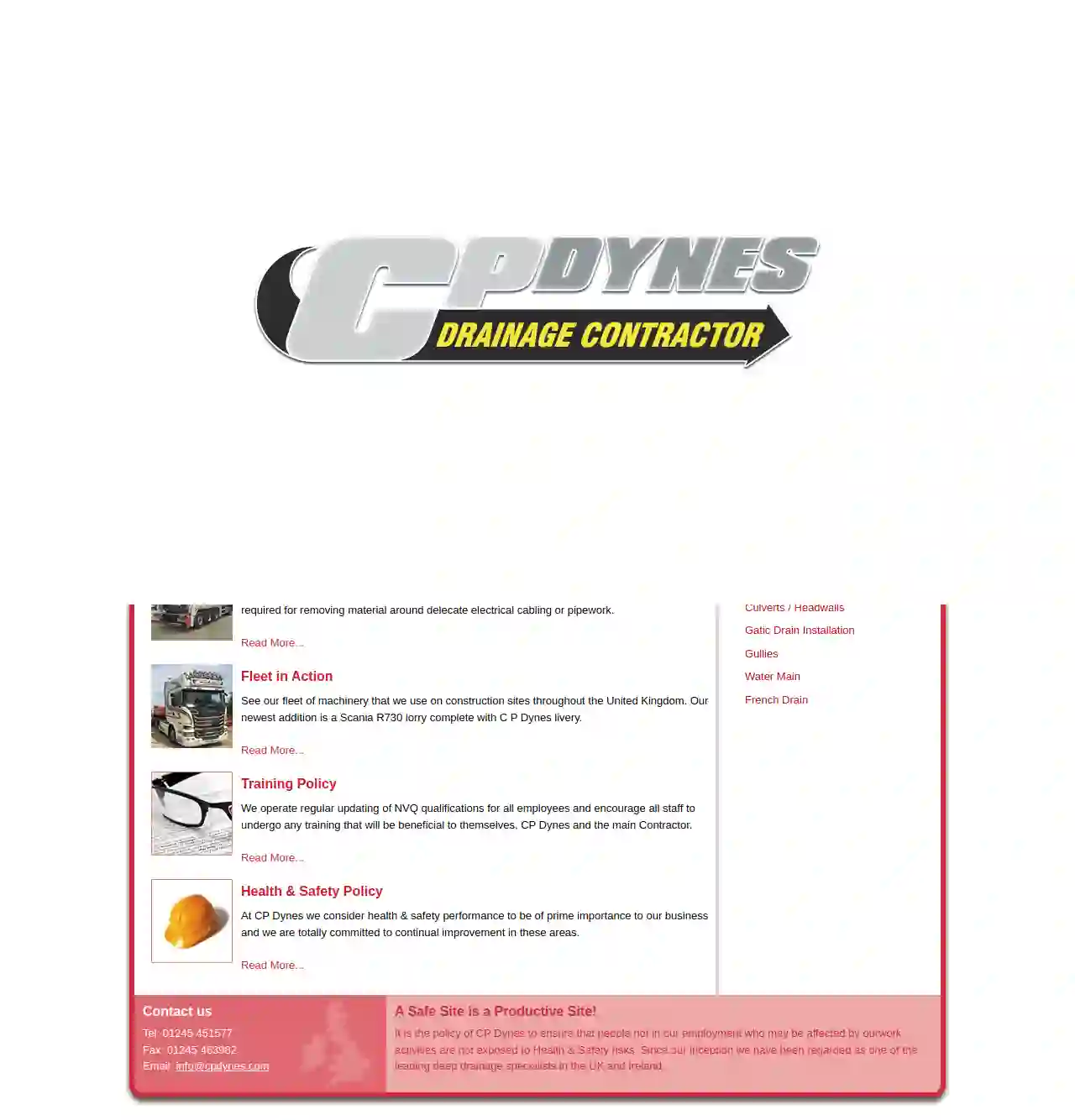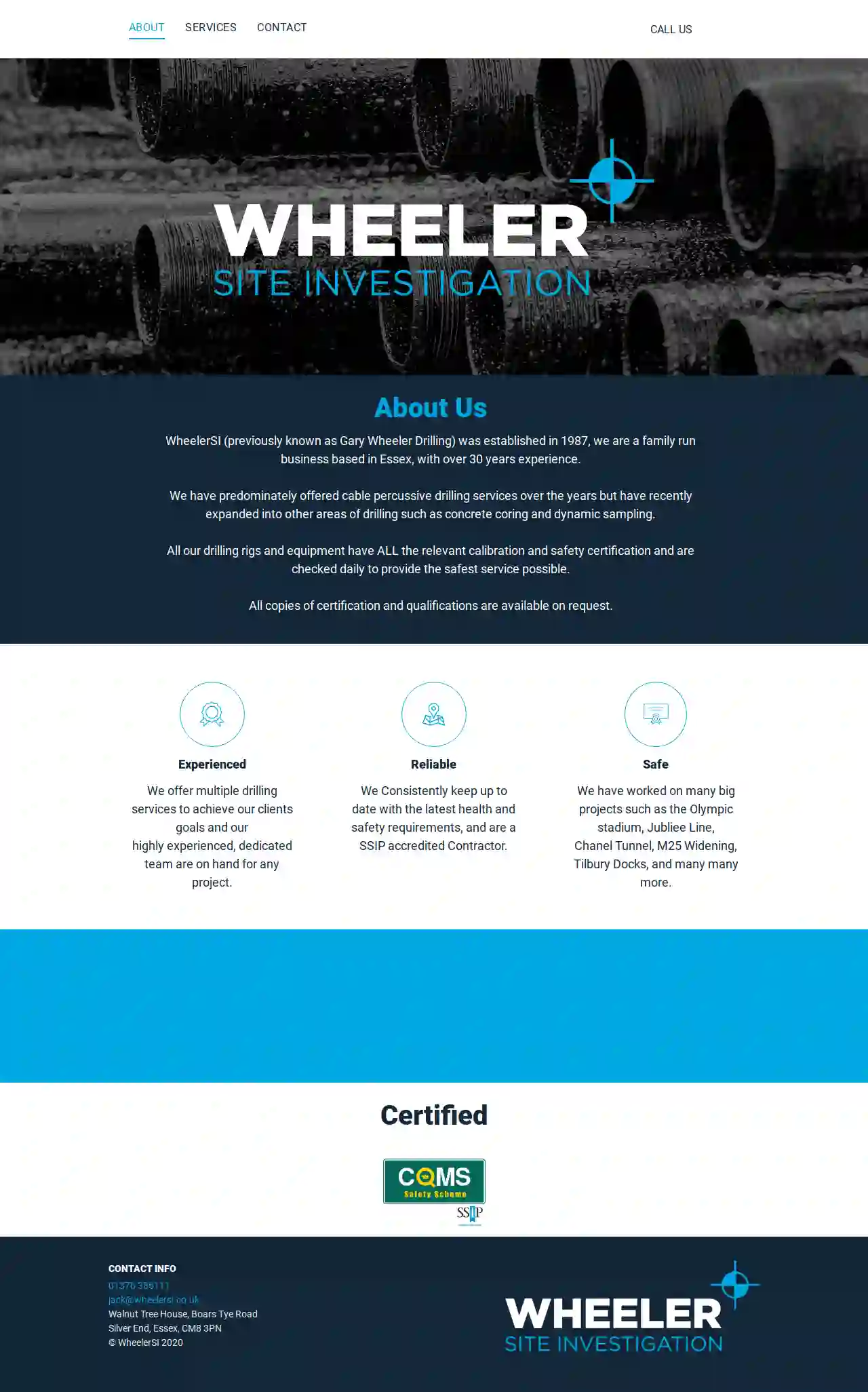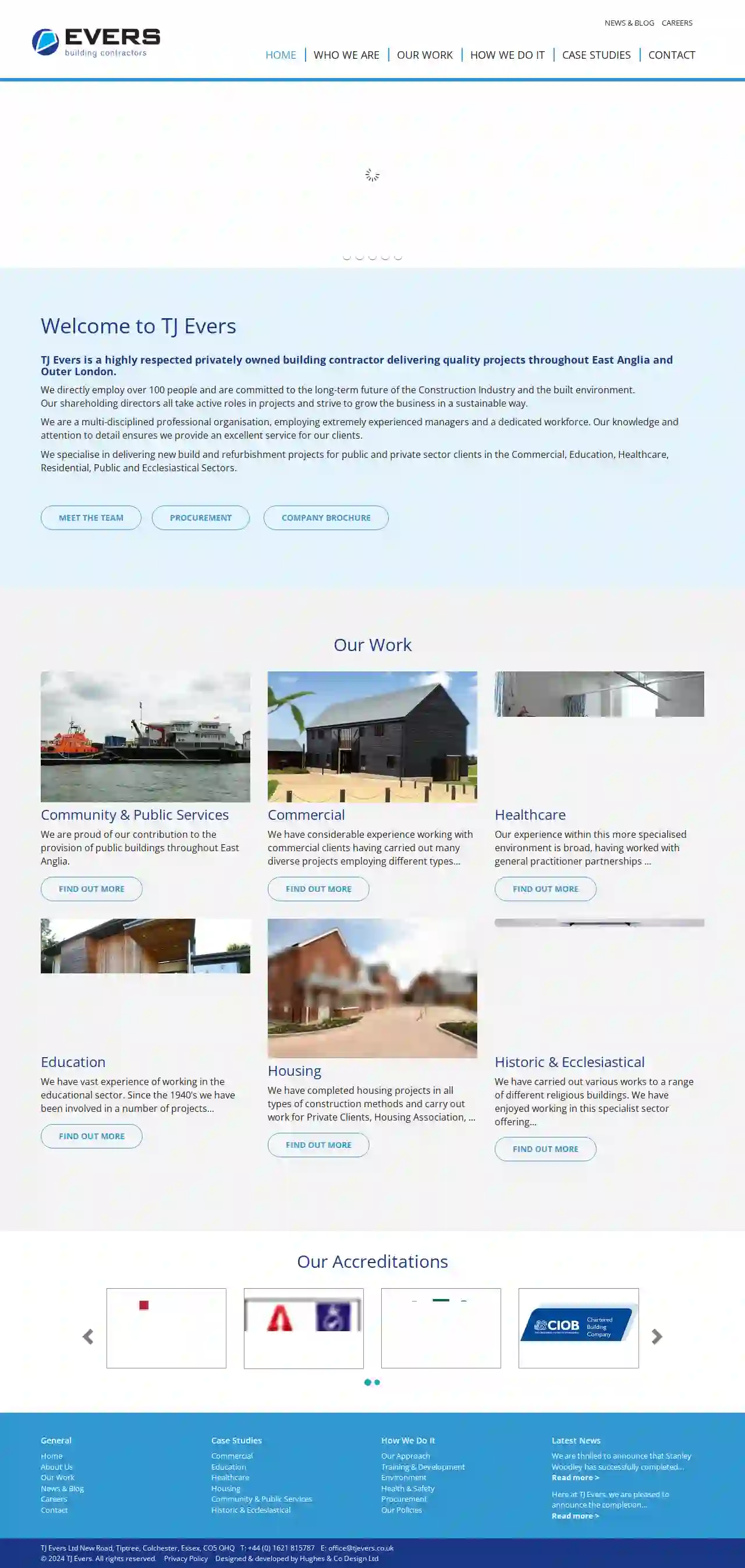Excavation Contractors Nazeing
Best Trenching Services in Nazeing
Receive up to 3 Excavation Services quotes for your project today! Compare profiles, reviews, accreditations, portfolio, etc... and choose the best offer.

Brentwood C Excavation
527 reviews56 54th Street South, Wasaga Beach, L9Z 1W9, GBAbout Brentwood C Excavation For over 25 years, Brentwood C Excavation has been the trusted excavation contractor for Wasaga Beach and surrounding areas. We take pride in delivering exceptional service and achieving the best possible results for our clients. Our commitment goes beyond just completing a job; we strive to make the entire project experience problem-free, from initial consultation to final completion. We are a word-of-mouth business, built on a foundation of satisfied customers and strong relationships. Our team brings a wealth of experience and expertise to every project, ensuring meticulous attention to detail and clear communication throughout the process. We specialize in a variety of excavation projects, including foundations, drainage systems, pool installations, and large tree removals. Our team is equipped with the knowledge and skills necessary to safely and efficiently remove even the most challenging trees, minimizing disruption to your property. We encourage you to ask for our references – we’re confident they’ll speak to the quality of our work and commitment to your satisfaction.
- Services
- Why Us?
- Testimonials
- Gallery
Get Quote
Sterling Groundworks Essex and London
52 reviewsHowes Farm, Doddinghurst Road, Brentwood, CM15 0SG, GBAbout Us Sterling Groundworks have been operating since 2016 and are a family run business based in Essex. We primarily operate in the South-East of England, but have experience working nationwide and around Europe. We have a dedicated team for commercial groundworks for large scale infrastructure projects. How We Work We will help you achieve a problem & stress-free project from start to finish. Survey and Analyse. Highly regarded for groundwork in Essex, we have vast experience in all aspects of groundwork. Not just a landscaping and surfacing company, Sterling Groundworks LTD provides all types of groundwork for commercial and residential clients in London, Essex, Brentwood and surrounding areas. From customers who own their own properties and require assistance with vegetation clearance, tree crown reduction, all the way through to a completely landscaped finished project. To large organisations, our groundworks London team, have the skills and permissions to assist with land waste management, drainage cleaning services through digging footings and preparing your ground for any and all projects. Quotation, Planning and how jobs gonna be done. Our professional and abundantly skilled team here at Sterling Groundworks LTD, will invest their time to understand your project fully. Ensuring that you are left 100% satisfied and your unique groundwork project meets your individual and specific requirements. Whether it is a smaller project, fencing, paving, a new drive all the way through to roads and larger excavations, we will ensure that that your project is delivered to the highest standard whilst remaining competitively priced. Job starts, execution, etc. We work specifically with contractors to deliver groundworks on time and to specification. We have a dedicated support team on hand to deal with a project life cycle. Our reputation within the industry is excellent due to our dedication, attention to detail and strict health and safety policies that are in place. We look after all of our staff to ensure we keep our employees that are absolutely key in us staying at the forefront of our industry. We are your groundworks professionals Get in contact today and one of our friendly staff will be able to answer your questions.
- Services
- Why Us?
- Gallery
Get Quote
DJB Build
510 reviews123 Main Street, Birmingham, B12 9AB, GBAbout DJB Build DJB Build is a family-run building company based in the heart of the UK. We have over 20 years of experience in the construction industry, providing a wide range of building services to both domestic and commercial clients. Our team of skilled and experienced builders are dedicated to delivering high-quality workmanship and exceptional customer service. We pride ourselves on our attention to detail, commitment to deadlines, and competitive pricing. Whether you're looking for a small renovation or a large-scale construction project, DJB Build is the company you can trust to get the job done right. We are committed to providing our clients with a stress-free and enjoyable building experience. We work closely with our clients throughout the entire project, ensuring that their needs and expectations are met. We are also fully insured and accredited, giving you peace of mind that your project is in safe hands.
- Services
- Why Us?
- Accreditations
- Our Team
- Testimonials
- Gallery
Get Quote
CP Dynes
4.510 reviewsChelmsford, GBCompany History CP Dynes is a leading deep drainage and large bore specialist in the UK and Ireland. We have a reputation for delivering high-quality work and exceptional service on a wide range of projects, all while prioritizing safety. Our comprehensive fleet and equipment is self-owned and updated every 3 years. All our operatives are CSCS and Health and Safety trained and undergo regular testing in all relevant work practices. Our proprietor and supervisors are always present on site, personally directing and overseeing all activities. Our Commitment We are committed to understanding and meeting the needs and expectations of our clients, building strong and lasting relationships. Our ethos is to provide the highest standard of work while keeping costs to a minimum. Safety First At CP Dynes, we believe a safe site is a productive site. We are committed to ensuring that everyone on our sites, including those not in our direct employment, is safe and protected from health and safety risks.
- Services
- Why Us?
- Gallery
Get Quote
Elson group construction
51 reviews75 Springfield Road, Chelmsford, CM2 6JG, GBAbout Us As a team, we have a wealth of knowledge and experience in the construction industry as a leading Groundworks and Civil Engineering contractor based in Essex with our projects ranging in value up to £4million. What We Do Services we offer - Full Groundwork And Civil Engineering Contracts / Projects, Bulk Earth Works, Enabling Works, Foundations, All Aspects of Drainage, Reinforcement, Concrete and Shutting, Tarmac Works, External Works, Operated Plant Hire and Labour, Demolition, Aggregate supplies and Muck away services. With our knowledge and experience in the groundwork and civil engineering sector we can offer design and structural services to assist where possible value engineering options to ensure projects meet the required budgets. We can efficiently support any project from start to finish with our own fleet of plant and vehicles. We thrive to ensure each and every aspect and communication with us as a business is a positive one, as customer satisfaction and relationships are the key to our success. Working Together As part of our service, we focus on creating a partnership that makes a working relationship the key to completing every project on time and to your budget. Why Choose Us? When choosing a Groundwork Contractor the key elements are trust along with our open honest approach. "Trust is what we can assure we offer and our reputation proves this."
- Services
- Why Us?
- Gallery
Get Quote
Grabber Construction LLC
4.924 reviews652 Goshen Hill Road, Lebanon, 06249, GBAbout Us Grabber Construction LLC is a landscaping and excavation company based in Lebanon, Connecticut and serves the eastern portion of the state. We are known for our attention to detail and look forward to working with you. Please look at our services page to see what we may be able to help you with! Customer Satisfaction Guaranteed Your satisfaction is our priority and we strive to provide a service we are proud of. We start every project by providing a thorough consultation to understand your goals and the needs of the project. We do this to guarantee that the project is completed according to your preferences.
- Services
- Why Us?
- Gallery
Get Quote
Cl Construction , builders & landscapers Colchester
54 reviewsColchester, GBDriven by a passion for innovation and a dedication to exceeding industry standards, CL Construction continues to redefine the construction & landscaping industry, setting new benchmarks for efficiency, reliability, and excellence within the sector. In today's challenging economic climate, CL Construction is committed to providing top-quality building services at prices that won't break the bank. We specialise in extensions, refurbishments, bathrooms, kitchens, groundworks, driveways, patios, and all aspects of landscaping. As your reliable, one-stop shop for all building needs, we keep everything under one umbrella combining expert craftsmanship with affordability. Our team is dedicated to delivering outstanding results that exceed expectations while maintaining budget-friendly rates. Choose CL Construction for a seamless, stress-free experience and turn your vision into reality. Contact us today to discuss your project.
- Services
- Why Us?
- Testimonials
- Gallery
Get Quote
Wilfred King Paving & Excavating
123 Main Street, Anytown, N0N 0N0, GBAbout Wilfred King Paving Wilfred King Paving is a family-owned and operated business with over 20 years of experience in the paving industry. We are committed to providing our clients with high-quality paving services at competitive prices. We specialize in a wide range of paving services, including: Asphalt paving Concrete paving Driveway paving Patio paving Parking lot paving And more! We are dedicated to providing our clients with the best possible service. We use only the highest quality materials and our team of experienced professionals is committed to delivering exceptional results. We are also fully insured and bonded for your peace of mind. Contact us today for a free estimate!
- Services
- Why Us?
Get Quote
Wheeler Site Investigation
Walnut Tree House, Boars Tye Road, Silver End, CM8 3PN, GBAbout WheelerSI WheelerSI (previously known as Gary Wheeler Drilling) was established in 1987. We are a family-run business based in Essex, with over 30 years of experience. We have predominantly offered cable percussive drilling services over the years but have recently expanded into other areas of drilling such as concrete coring and dynamic sampling. Our Commitment to Safety All our drilling rigs and equipment have all the relevant calibration and safety certification and are checked daily to provide the safest service possible. All copies of certification and qualifications are available on request. Experienced and Reliable We offer multiple drilling services to achieve our clients' goals, and our highly experienced, dedicated team are on hand for any project. We consistently keep up to date with the latest health and safety requirements and are a SSIP accredited Contractor. A Proven Track Record We have worked on many big projects such as the Olympic stadium, Jubilee Line, Channel Tunnel, M25 Widening, Tilbury Docks, and many more.
- Services
- Why Us?
- Gallery
Get Quote
TJ Evers Ltd
4.210 reviewsNew Road, Tiptree, Colchester, Essex, CO5 0HQ, GBWelcome to TJ Evers TJ Evers is a highly respected privately owned building contractor delivering quality projects throughout East Anglia and Outer London. We directly employ over 100 people and are committed to the long-term future of the Construction Industry and the built environment. Our shareholding directors all take active roles in projects and strive to grow the business in a sustainable way. We are a multi-disciplined professional organisation, employing extremely experienced managers and a dedicated workforce. Our knowledge and attention to detail ensures we provide an excellent service for our clients. We specialise in delivering new build and refurbishment projects for public and private sector clients in the Commercial, Education, Healthcare, Residential, Public and Ecclesiastical Sectors.
- Services
- Why Us?
- Gallery
Get Quote
Over 13,059+ Excavation Companies onboarded
Our excavation providers operate in Nazeing and surrounding areas!
ExcavationHQ has curated and vetted Top Excavation Companies near Nazeing. Find a top & trustworthy pro today.
Frequently Asked Questions About Excavation Contractors
- Sloped Property: Your property has a significant slope, making it prone to soil erosion or landslides.
- Creating Usable Space: You want to level off a sloped area to create a flat surface for patios, gardens, or other outdoor spaces.
- Preventing Damage: Erosion is threatening existing structures, driveways, or walkways.
- Landscaping Features: You're incorporating tiered gardens, raised beds, or other landscaping elements requiring soil retention.
- Excavators: Versatile machines with a bucket, arm, and rotating cab for digging, lifting, and moving earth.
- Backhoes: Similar to excavators but with a digging bucket on the back and a loader bucket on the front, ideal for trenching and smaller excavations.
- Bulldozers: Powerful machines with a large blade for pushing earth, clearing land, and leveling surfaces.
- Skid Steers: Compact and maneuverable loaders with various attachments (buckets, forks) for digging, loading, and grading in tight spaces.
- Trenchers: Specialized machines for digging narrow trenches for utilities.
- Dump Trucks: Vehicles for hauling excavated material to disposal sites.
- Hauling to Designated Disposal Sites: Transporting excavated material to approved landfills or recycling centers.
- Recycling or Reuse: If suitable, some excavated soil might be recycled for other projects or reused on-site for landscaping or backfilling.
- Complying with Regulations: Adhering to local and environmental regulations for soil disposal to prevent contamination or illegal dumping.
How do I know if I need a retaining wall?
What equipment is used for excavation?
What is the difference between cut and fill excavation?
Cut: Involves excavating soil from an area where the existing grade is higher than the desired grade.
Fill: Refers to using the excavated soil ('cut' material) to raise the grade in an area where the existing grade is lower than desired.
This method minimizes the need to import or export soil, reducing costs and environmental impact. It's commonly used for site preparation, road construction, and landscaping.
How do you handle soil disposal after excavation?
How do I know if I need a retaining wall?
- Sloped Property: Your property has a significant slope, making it prone to soil erosion or landslides.
- Creating Usable Space: You want to level off a sloped area to create a flat surface for patios, gardens, or other outdoor spaces.
- Preventing Damage: Erosion is threatening existing structures, driveways, or walkways.
- Landscaping Features: You're incorporating tiered gardens, raised beds, or other landscaping elements requiring soil retention.
What equipment is used for excavation?
- Excavators: Versatile machines with a bucket, arm, and rotating cab for digging, lifting, and moving earth.
- Backhoes: Similar to excavators but with a digging bucket on the back and a loader bucket on the front, ideal for trenching and smaller excavations.
- Bulldozers: Powerful machines with a large blade for pushing earth, clearing land, and leveling surfaces.
- Skid Steers: Compact and maneuverable loaders with various attachments (buckets, forks) for digging, loading, and grading in tight spaces.
- Trenchers: Specialized machines for digging narrow trenches for utilities.
- Dump Trucks: Vehicles for hauling excavated material to disposal sites.
What is the difference between cut and fill excavation?
Cut: Involves excavating soil from an area where the existing grade is higher than the desired grade.
Fill: Refers to using the excavated soil ('cut' material) to raise the grade in an area where the existing grade is lower than desired.
This method minimizes the need to import or export soil, reducing costs and environmental impact. It's commonly used for site preparation, road construction, and landscaping.
How do you handle soil disposal after excavation?
- Hauling to Designated Disposal Sites: Transporting excavated material to approved landfills or recycling centers.
- Recycling or Reuse: If suitable, some excavated soil might be recycled for other projects or reused on-site for landscaping or backfilling.
- Complying with Regulations: Adhering to local and environmental regulations for soil disposal to prevent contamination or illegal dumping.